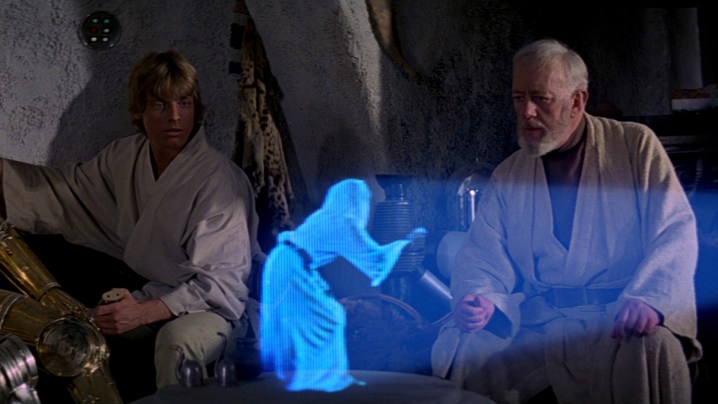
Remember the iconic scene from the first Star Wars movie in which R2-D2 projects a Princess Leia hologram, beseeching Obi-Wan Kenobi to help her? Similar technology in the real world might one day do a lot more than offering sci-fi warnings; it could potentially transform lives, too. And all thanks to a little bit of brain manipulation.
At the University of California at Berkeley, researchers have been busy exploring ways to project a holographic image directly into the brain. As they have discovered, this can be used to both read neural activity and also to stimulate it.
The results could mean one day being able to activate or suppress thousands of neurons at once; copying patterns of real brain activity to trick the brain into thinking that it’s felt, seen or sensed something. So Star Wars with a touch of The Matrix or Inception, then!

“We have developed a system using laser light that can both ‘read’ brain activity and ‘write’ brain activity,” Hillel Adesnik, an assistant professor of molecular and cell biology, told Digital Trends. “The system uses principles of holography: a method to generate three-dimensional patterns of light that many might be familiar with in holographic displays. The goal of this technology is to measure brain activity in both health and disease so that we can correct aberrant patterns of activity in real time, and treat a wide array of neurological disorders.”
“The goal of this technology is to measure brain activity in both health and disease.”
The holographic projection technology works using an LCD screen which functions as a holographic negative to shape laser light into custom-designed patterns. These 40W laser beams are then pulsed incredibly rapidly in 300 femtosecond-long bursts every microsecond. The goal is to pulse these quickly enough to simulate the normal firing rates seen in the brain’s cortex.
So far, the technique has been successfully demonstrated in mice. It was achieved by engineering neurons in the mouse’s brain so that they express proteins which create a brief spike of activity when they are hit with light. At present, it has only been carried out on a tiny piece of brain, measuring a half-millimeter square, but the researchers think they could scale this up. And when they do, the results may be extraordinary.
“In the future, when gene therapy has been shown to be safe in humans, this system could track brain activity of patients with neurological disorders, including epilepsy and schizophrenia, rapidly identify when brain activity is going wrong, and then stimulate patterns of activity in the brain to correct this activity and block the symptoms of these diseases,” Adesnik continued.
“Patients who have lost function of their retinas or other sense organs could use this system to regain vision.”
“More generally, this technology could also be used for neural prosthetics. Patients who have lost function of their retinas or other sense organs could use this system to regain vision. In principal, it might be possible to take the imaging data from a head mounted camera and write this activity — after the appropriate transformation — as neural activity directly into the brain to provide someone who is blind with artificial vision.”

In the same vein, Adesnik said that it might be possible for researchers to use this development to enable new ways of controlling smart prostheses, such as robotic arms.
While this research is still at a relatively early stage, it could potentially solve two of the biggest challenges which exist in the field of brain-machine interfaces. These are the low spatial resolution of existing systems approved for human use, and the fact that such systems don’t typically write back in sensory feedback. This is crucial if researchers want to build tools that will accurately let us use our hands are arms to pick up objects.
Next up for the project? A neural prosthesis for mice, apparently.
“We plan to use this system to see if we can cure models of cognitive disease, such as schizophrenia,” Adesnik continued. “But as basic neuroscientists, we are also primarily interested in using this system to ‘crack’ the neural codes of sensory perception.”
:We want to understand how our brain builds perceptions of our external world all through the language of neurons, which is basically a digital code of zeros and ones in hundreds of millions of brain cells. We believe this new technology can address this fundamental question in neuroscience because we can attempt to generate artificial perceptions by writing specific patterns of activity into the brain and see what ‘works.’”
A paper describing the work was recently published in the journal Nature Neuroscience.


